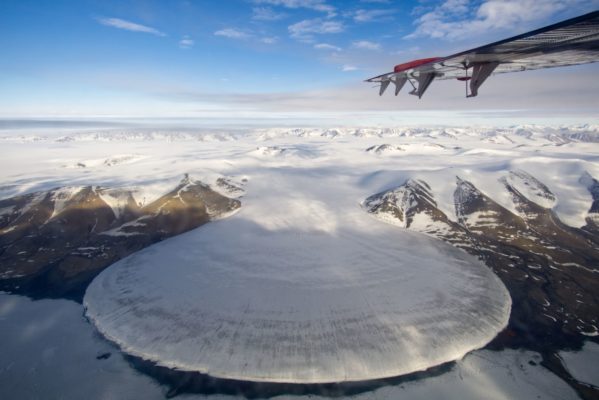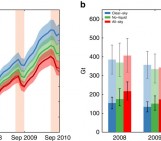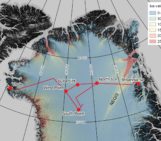
Ice is a viscous fluid: it flows but slowly, reaching up to 100 m/yr for the fastest flowing ice. That’s 0.00001 km/hr, so you’d never see it with the naked eye. But what influences the morphology of the glaciers is the shape of the topography that lies underneath them.
Elephant Foot Glacier, shown above, aptly named for its shape, is a textbook-example of a piedmont glacier. These types of glaciers occur when steep valley glaciers spill into a flat plain. The viscous ice can then spread out uniformly, in a very similar way to your pancake batter in your pan, but in super slow motion.

The spreading out of a viscous material over a flat surface. In this case, pancake batter. Photo credit: Stefan’s gourmet blog
Edited by Violaine Coulon and Clara Burgard
Imaggeo is the EGU’s online open access image repository. All geoscientists (and others) can submit their photographs and videos to this repository and, since it is open access, these images can be used for free by scientists for their presentations or publications, by educators and the general public, and some images can even be used freely for commercial purposes. Photographers also retain full rights of use, as Imaggeo images are licensed and distributed by the EGU under a Creative Commons licence. Submit your photos at http://imaggeo.egu.eu/upload/.
Marie Cavitte is a PostDoc at the Georges Lemaître Centre for Earth and Climate Research, at UCLouvain in Belgium. She studies surface mass balance in Antarctica as part of the Mass2Ant project. She investigates why reconstructed surface mass balance history varies between observations and models. She tweets at @MarieCavitte.






Colin Sayers
Ice is a polycrystalline solid, not a viscous fluid. This fact makes the flow of ice all the more interesting.